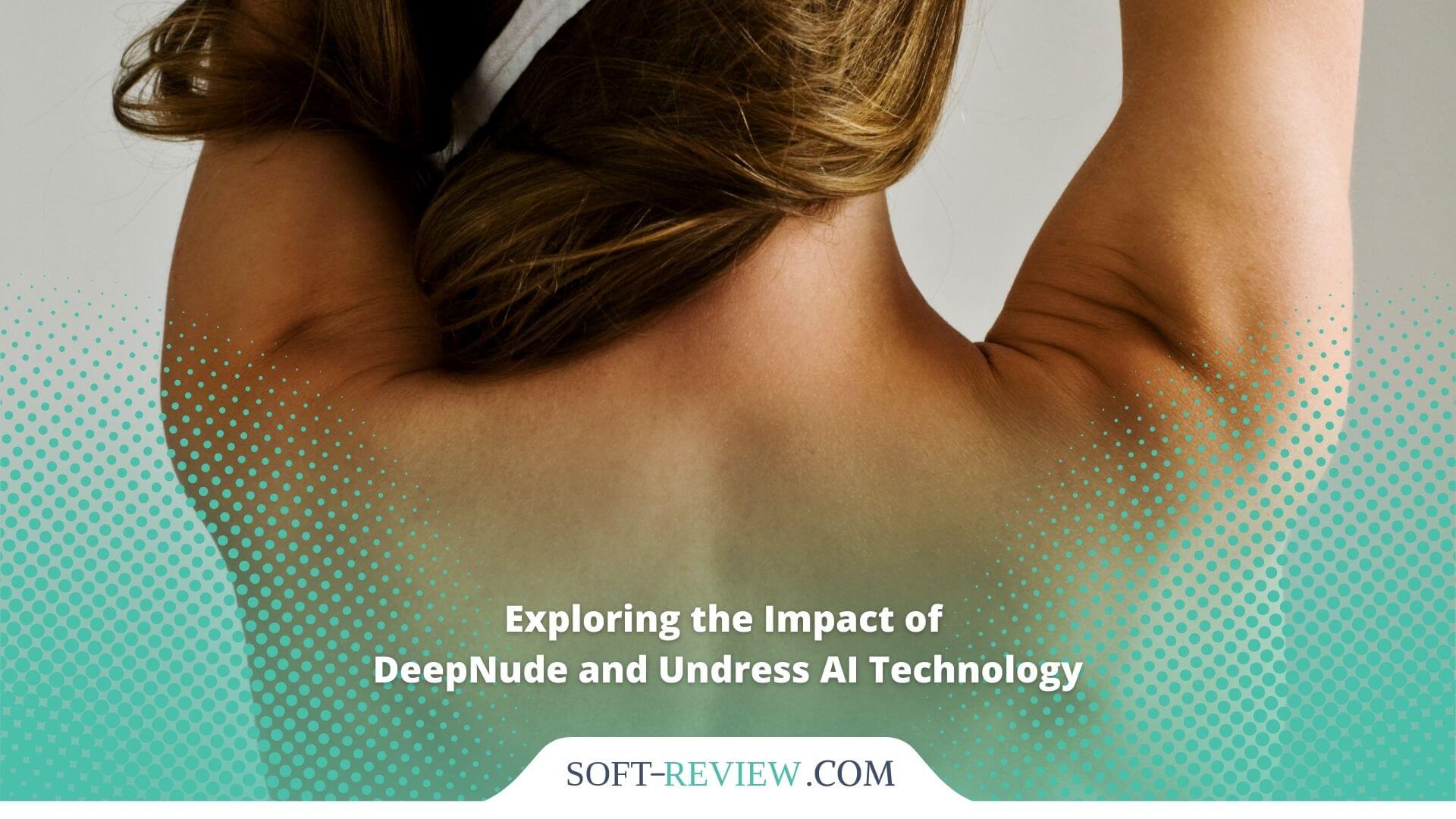Undress AI: The Rise Of AI Image Manipulation & Ethical Use?
Ever wondered if technology could virtually redesign reality, pixel by pixel? The rise of "undress ai" isn't just a futuristic fantasy; it's a rapidly expanding digital frontier, blurring the lines between what's real and what's artificially generated. This has brought forth questions regarding privacy, ethics, and the implications of such powerful technology.
Undress ai refers to a category of online services and applications that utilize advanced artificial intelligence to digitally alter images, specifically to simulate the removal of clothing. These tools leverage sophisticated deep learning algorithms, including stable diffusion models and generative adversarial networks (GANs), to analyze uploaded images and generate altered versions where clothing appears to have been realistically removed. This technology essentially attempts to reconstruct the areas of the body that would be visible if the person were unclothed, creating a digitally altered image.
| Aspect | Details |
|---|---|
| Technology | Deep learning, GANs, Stable Diffusion |
| Function | Digitally removes clothing from images |
| Applications | Fashion design, virtual fitting rooms, artistic expression (controversial) |
| Risks | Privacy violations, deepfakes, harassment, bullying |
| Ethical Concerns | Consent, misuse, potential for abuse |
| Example Tools | Slazzer 3.0, Unclothy, Ptool's AI Clothes Remover |
| Related Concepts | Deepfakes, image manipulation, AI ethics |
| Reference | Deepfake on Wikipedia |
One might ask, how does this technology actually work? It begins with the user uploading an image to a platform that offers undress ai capabilities. The ai then analyzes the image, identifying the human figure and the clothing present. Deep learning algorithms, trained on vast datasets of images of clothed and unclothed individuals, are then employed to "reconstruct" the image, digitally removing the clothing and attempting to generate a realistic depiction of the body underneath. The sophistication of these algorithms determines the realism of the resulting image, with some tools producing more convincing results than others.
- Who Is Justin Fletchers Wife A Deep Dive Into The Life Of The Woman Behind The Iconic Presenter
- Crosswords Mirror Your Ultimate Puzzle Adventure Awaits
Several undress ai tools are currently available, offering varying levels of functionality and sophistication. Some are free to use, while others require a subscription or payment for access to advanced features or higher-quality results. These tools often boast user-friendly interfaces, allowing individuals with limited technical expertise to easily upload images and generate altered versions. For instance, some tools advertise the ability to remove clothes from photos online with a simple tap of an upload button and another tap of a "generate" button. Others claim to allow users to swap clothes in photos or modify images in seconds with just a few clicks.
Unclothy, for instance, is specifically designed as an ai tool to undress photos. It markets itself as leveraging advanced ai models to automatically detect and remove clothing, generating so-called "deepnude" images. Similarly, ptool’s ai clothes remover offers a user-friendly interface, allowing users to upload a photo, erase the clothes using ai, and even swap them for a new outfit style. Slazzer 3.0 is another free undress ai tool that has been touted for its high degree of accuracy in removing clothes from images. While Slazzer 3.0 is considered a powerful tool, some users find it more difficult to use compared to other options.
The technology behind these tools relies heavily on deep learning algorithms, often referred to as the "deepnude algorithm," although this term is somewhat misleading as it encompasses a range of different algorithms and models. These algorithms are trained on massive amounts of visual data, enabling them to understand the intricate details of human anatomy and clothing patterns. By analyzing this data, the algorithms can attempt to intelligently reconstruct the areas of the image that are obscured by clothing, generating a plausible representation of the body underneath.
- Unveiling Wynne Evans Net Worth 2024 The Inside Scoop Yoursquove Been Waiting For
- Brian May Fortune The Guitar Legends Wealth Unveiled
Beyond the technical aspects, the applications of undress ai are diverse and, in many cases, highly controversial. Proponents of the technology suggest potential uses in fields like fashion design, where it could be used to create virtual fitting rooms and personalized styling experiences for customers. By allowing customers to virtually "try on" clothes without physically doing so, retailers could potentially enhance the shopping experience and reduce returns. In the realm of digital art, some argue that undress ai offers an unprecedented tool for artistic expression, pushing the boundaries of what is possible with ai in creating nude representations.
However, the potential for misuse and ethical concerns surrounding undress ai are significant. The ability to digitally remove clothing from images raises serious questions about privacy, consent, and the potential for harassment and abuse. One of the most pressing concerns is the creation of deepfakes without consent. These are digitally altered images or videos that depict individuals doing or saying things they never did, often with malicious intent. In the context of undress ai, deepfakes could be used to create non-consensual pornography or to humiliate and defame individuals.
The creation and distribution of such deepfakes can have devastating consequences for the victims, leading to emotional distress, reputational damage, and even physical harm. The fact that these images can be created and shared anonymously online makes it difficult to hold perpetrators accountable and further exacerbates the problem. Moreover, the increasing sophistication of ai technology makes it harder to distinguish between genuine images and deepfakes, further eroding trust in digital media.
Another significant concern is the potential for these tools to be used for bullying and harassment, particularly among young people. The ability to digitally undress someone and share the altered image online can be a form of cyberbullying, causing immense emotional distress and psychological harm to the victim. The anonymity afforded by the internet can embolden perpetrators, making it easier for them to engage in this type of behavior without fear of reprisal.
Furthermore, the widespread availability of undress ai tools raises broader societal concerns about the objectification and sexualization of individuals, particularly women. By reducing individuals to their physical appearance and treating their bodies as objects to be manipulated and exploited, these tools contribute to a culture of disrespect and inequality. This can have a particularly harmful impact on young people, who are still developing their sense of self-worth and identity.
Given these concerns, it is essential to approach the use of undress ai responsibly and ethically. This requires a multi-faceted approach involving technical safeguards, legal regulations, and public awareness campaigns. One crucial step is to develop and implement technical measures to prevent the misuse of these tools. This could include features that detect and flag images that have been digitally altered without consent or that are used for malicious purposes. Watermarking technologies can also be used to identify images that have been created or modified using ai, making it easier to track their origin and prevent their unauthorized use.
Legal regulations are also necessary to address the harms caused by undress ai. Laws prohibiting the creation and distribution of non-consensual deepfakes are essential to protect individuals from this form of abuse. These laws should include provisions for criminal penalties and civil remedies, allowing victims to seek justice and compensation for the harm they have suffered. It is also important to clarify the legal liability of platforms that host or facilitate the creation and distribution of deepfakes. These platforms should be required to take proactive steps to prevent the misuse of their services and to remove offending content promptly.
In addition to technical safeguards and legal regulations, public awareness campaigns are crucial to educate people about the risks and ethical implications of undress ai. These campaigns should aim to raise awareness about the potential for misuse, the harm caused by deepfakes, and the importance of respecting individual privacy and consent. They should also provide guidance on how to identify and report deepfakes and other forms of online abuse.
It is also important to foster a culture of ethical ai development and deployment. This requires collaboration between researchers, developers, policymakers, and civil society organizations to ensure that ai technologies are used in a responsible and beneficial manner. Ethical guidelines and standards should be developed to guide the development and deployment of ai systems, emphasizing principles such as fairness, transparency, accountability, and respect for human rights.
The increasing popularity of apps and websites that use artificial intelligence to undress women in photos has raised concerns among researchers. In September alone, a staggering 24 million people visited websites offering "undressing" services, highlighting the widespread demand for and use of this technology. This underscores the urgent need for greater awareness, regulation, and ethical considerations to address the potential harms associated with undress ai.
The use of character descriptions, such as gender, body type, and pose, to generate nude images through prompts further complicates the ethical landscape. While some argue that this allows for artistic expression and exploration, others raise concerns about the potential for exploitation and the reinforcement of harmful stereotypes. It is crucial to consider the potential impact of these technologies on individuals and society as a whole and to ensure that they are used in a way that promotes respect, equality, and human dignity.
While tools like AI Image Magic Cleanup offer free access to undress ai capabilities, the associated risks must be carefully considered. The ease of use and accessibility of these tools can lower the barrier to entry for malicious actors, increasing the potential for misuse and abuse. It is therefore essential to educate users about the responsible use of these technologies and to implement safeguards to prevent their misuse.
In conclusion, the rise of undress ai presents both opportunities and challenges. While the technology has potential applications in fields such as fashion design and digital art, the ethical concerns and potential for misuse are significant. By implementing technical safeguards, enacting legal regulations, and raising public awareness, we can mitigate the risks and ensure that undress ai is used in a responsible and ethical manner. Ultimately, the goal should be to harness the power of ai for good while protecting individual privacy, promoting respect, and upholding human dignity.



Detail Author:
- Name : Prof. Rex Runolfsdottir I
- Username : bella.wiza
- Email : melissa.mills@yahoo.com
- Birthdate : 1993-08-10
- Address : 5936 Kohler Forge Apt. 862 Prohaskastad, IL 51119
- Phone : +1-539-972-9882
- Company : West PLC
- Job : Project Manager
- Bio : Quisquam non impedit veritatis. Provident eius quo quidem est. Vel a pariatur est dolores laudantium facilis. Consequuntur soluta dolore commodi et.
Socials
facebook:
- url : https://facebook.com/karley9967
- username : karley9967
- bio : Est hic ut consequatur ipsa delectus nesciunt enim rem.
- followers : 2795
- following : 288
twitter:
- url : https://twitter.com/hammes2004
- username : hammes2004
- bio : Consequatur autem et et. Itaque fugit qui excepturi qui modi explicabo. Qui voluptas esse sit quam qui velit.
- followers : 568
- following : 1828
tiktok:
- url : https://tiktok.com/@hammes1972
- username : hammes1972
- bio : Nesciunt enim exercitationem dolorum. Et debitis quia error nisi aut sed quod.
- followers : 5373
- following : 1969